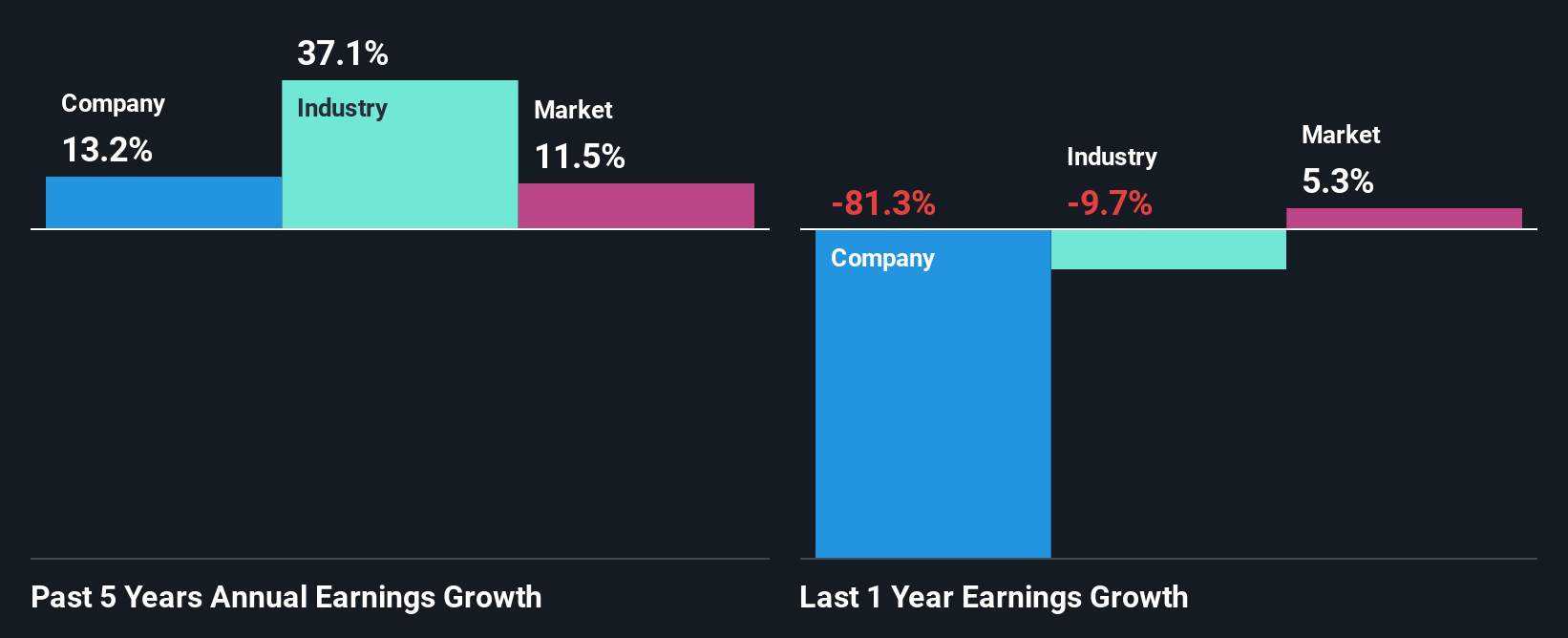Has Mesa Royalty Trust's (NYSE:MTR) Impressive Stock Performance Got Anything to Do With Its Fundamentals?
Mesa Royalty Trust's (NYSE:MTR) stock is up by a considerable 28% over the past month. As most would know, fundamentals are what usually guide market price movements over the long-term, so we decided to look at the company's key financial indicators today to determine if they have any role to play in the recent price movement. Particularly, we will be paying attention to Mesa Royalty Trust's ROE today.
Return on Equity or ROE is a test of how effectively a company is growing its value and managing investors’ money. In other words, it is a profitability ratio which measures the rate of return on the capital provided by the company's shareholders.
How To Calculate Return On Equity?
Return on equity can be calculated by using the formula:
Return on Equity = Net Profit (from continuing operations) ÷ Shareholders' Equity
So, based on the above formula, the ROE for Mesa Royalty Trust is:
13% = US$422k ÷ US$3.1m (Based on the trailing twelve months to March 2025).
The 'return' is the yearly profit. So, this means that for every $1 of its shareholder's investments, the company generates a profit of $0.13.
See our latest analysis for Mesa Royalty Trust
Why Is ROE Important For Earnings Growth?
We have already established that ROE serves as an efficient profit-generating gauge for a company's future earnings. Depending on how much of these profits the company reinvests or "retains", and how effectively it does so, we are then able to assess a company’s earnings growth potential. Generally speaking, other things being equal, firms with a high return on equity and profit retention, have a higher growth rate than firms that don’t share these attributes.
Mesa Royalty Trust's Earnings Growth And 13% ROE
At first glance, Mesa Royalty Trust seems to have a decent ROE. Even when compared to the industry average of 13% the company's ROE looks quite decent. This certainly adds some context to Mesa Royalty Trust's moderate 13% net income growth seen over the past five years.
As a next step, we compared Mesa Royalty Trust's net income growth with the industry and were disappointed to see that the company's growth is lower than the industry average growth of 37% in the same period.

Earnings growth is an important metric to consider when valuing a stock. It’s important for an investor to know whether the market has priced in the company's expected earnings growth (or decline). Doing so will help them establish if the stock's future looks promising or ominous. Is Mesa Royalty Trust fairly valued compared to other companies? These 3 valuation measures might help you decide.
Is Mesa Royalty Trust Efficiently Re-investing Its Profits?
While Mesa Royalty Trust has a three-year median payout ratio of 98% (which means it retains 1.5% of profits), the company has still seen a fair bit of earnings growth in the past, meaning that its high payout ratio hasn't hampered its ability to grow.
Additionally, Mesa Royalty Trust has paid dividends over a period of at least ten years which means that the company is pretty serious about sharing its profits with shareholders.
Summary
On the whole, we do feel that Mesa Royalty Trust has some positive attributes. Its earnings have grown respectably as we saw earlier, probably due to its high returns. However, it does reinvest little to almost none of its profits, so we wonder what effect this could have on its future growth prospects. Until now, we have only just grazed the surface of the company's past performance by looking at the company's fundamentals. You can do your own research on Mesa Royalty Trust and see how it has performed in the past by looking at this FREE detailed graph of past earnings, revenue and cash flows.
Have feedback on this article? Concerned about the content? Get in touch with us directly. Alternatively, email editorial-team (at) simplywallst.com.
This article by Simply Wall St is general in nature. We provide commentary based on historical data and analyst forecasts only using an unbiased methodology and our articles are not intended to be financial advice. It does not constitute a recommendation to buy or sell any stock, and does not take account of your objectives, or your financial situation. We aim to bring you long-term focused analysis driven by fundamental data. Note that our analysis may not factor in the latest price-sensitive company announcements or qualitative material. Simply Wall St has no position in any stocks mentioned.
① During the campaign period, US stocks, US stocks short selling, US stock options, Hong Kong stocks, and A-shares trading will maintain at $0 commission, and no subscription/redemption fees for mutual fund transactions. $0 fee offer has a time limit, until further notice. For more information, please visit: https://www.webull.hk/pricing
Webull Securities Limited is licensed with the Securities and Futures Commission of Hong Kong (CE No. BNG700) for carrying out Type 1 License for Dealing in Securities, Type 2 License for Dealing in Futures Contracts and Type 4 License for Advising on Securities.

English